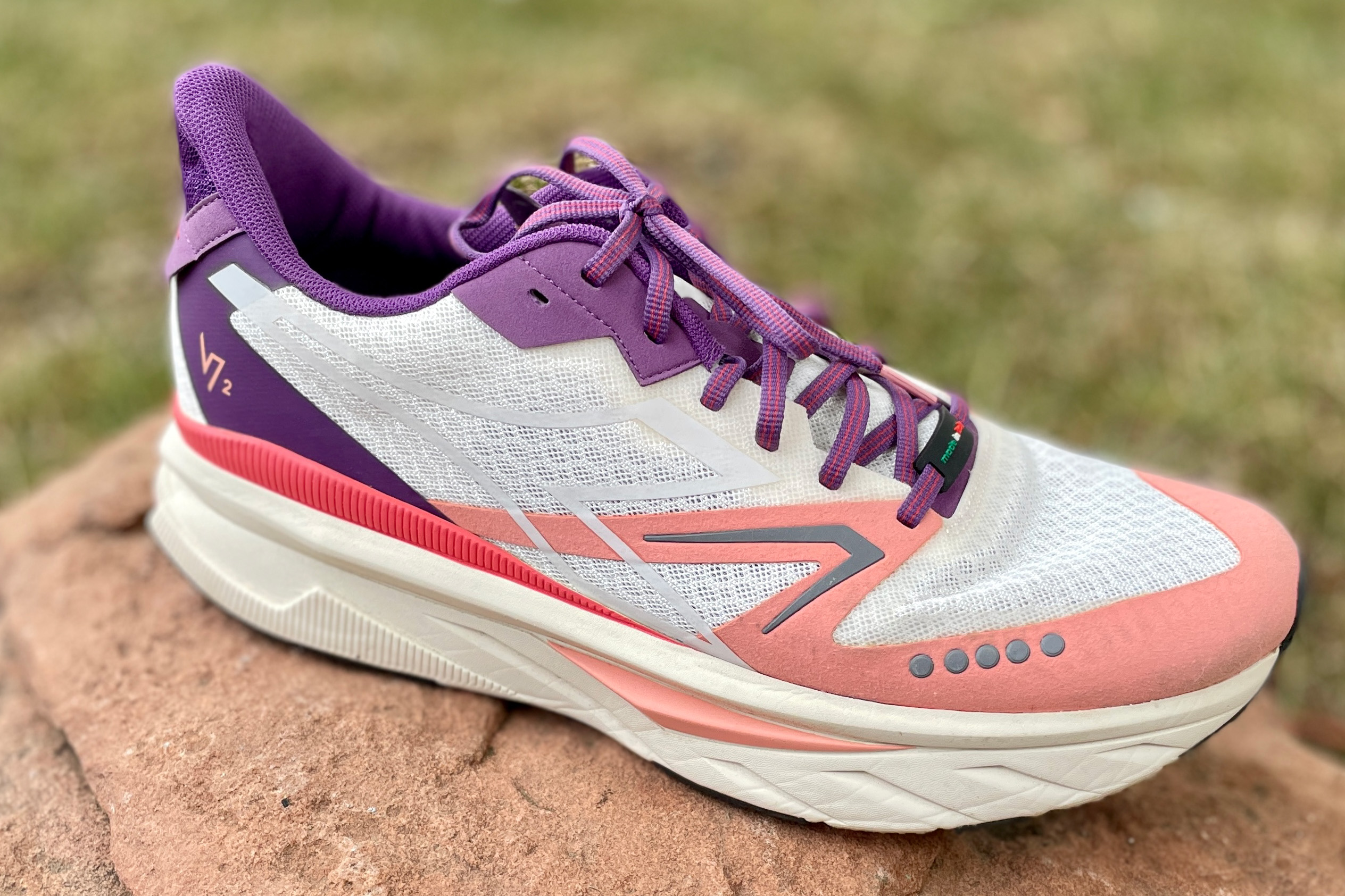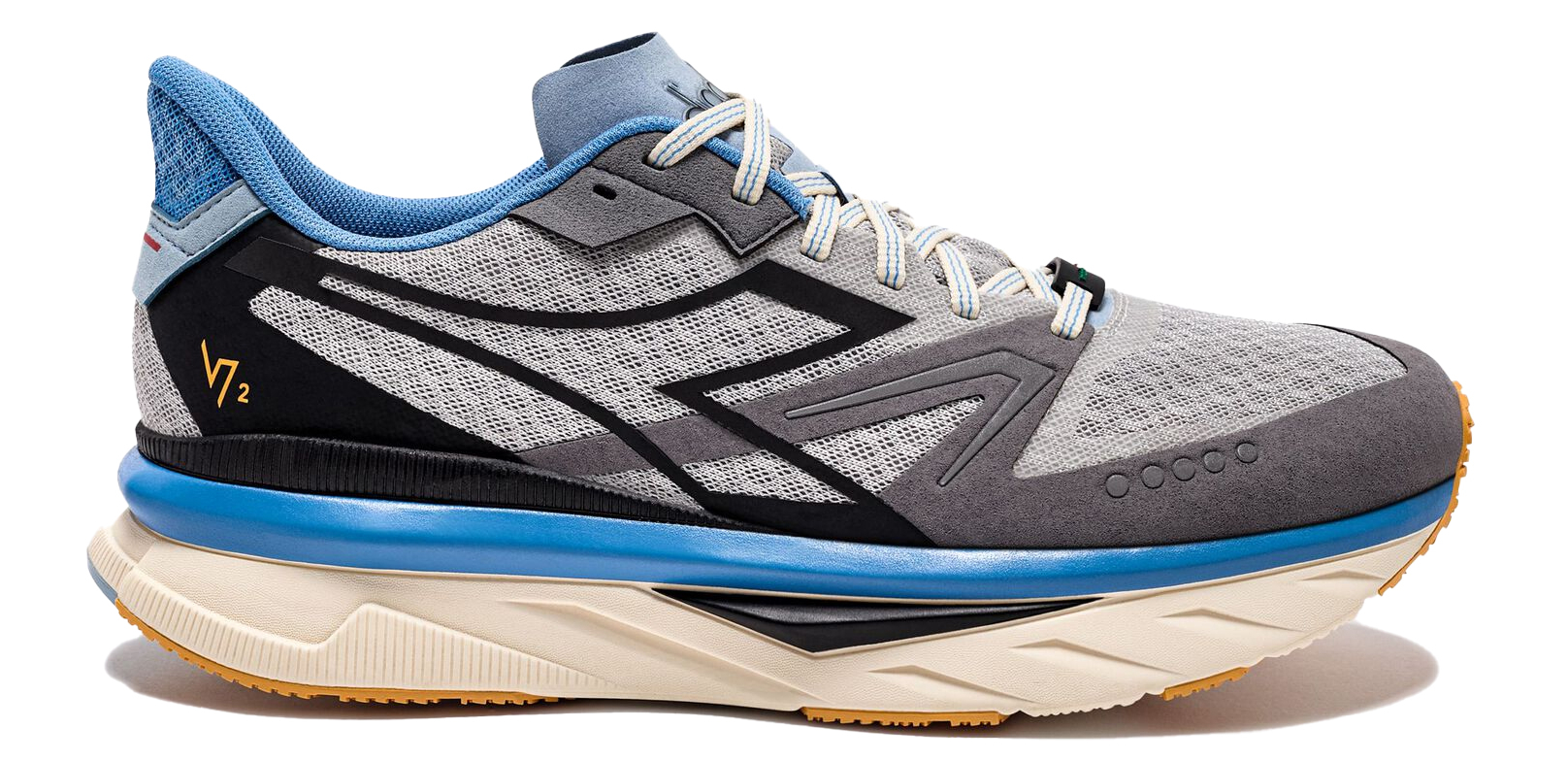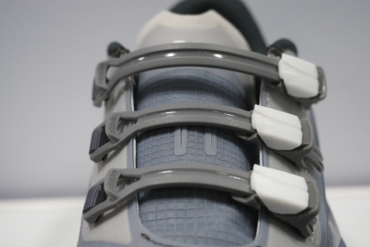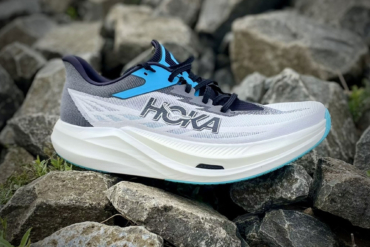Asking for directions in Italy can lead to one of two replies: do you want the fastest way or the most beautiful way? This is an exaggerated way of explaining an Italian approach to life. Passion for experience and enjoyment in life can be prized over speed and efficiency. It’s a beautiful sentiment but one that seems at odds with a capitalistic worldview.
After several days in Venice with the 76-year-old footwear company Diadora, an emphasis on getting “there” the most beautiful way is perhaps its guiding principle.
At the same time, the company is springing forward with innovation and technology while cobblers with decades of shoe manufacturing experience mold, shape, and stitch Italy’s only handmade performance running shoe, the Diadora ATOMO V7000-2.
In short: Gen-X and older millennials might remember Diadora as the brand behind tennis superstar Bjorn Borg or as the company that made your youth soccer cleats. Diadora is now at the forefront of running style — people within major companies in the running industry have admitted that Diadora is one of their favorite brands, and the company is threading the needle between old-world manufacturing and performance footwear.
- Upper: Nylon air mesh and microfiber
- Insole: A high-density, removable foam “DNATTIVO”
- Midsole: DD Anima — a proprietary EVA compound
- Outsole: Duratech 5000 wear-resistant compound
- Midsole drop: 5mm
- Weight: 9.2 oz. (men’s size 10)
- Price: $240
Pros
- Handmade by workers living in Treviso and the Montebelluna Valley, Italy
- Design details makes the shoe stylish for running and wearing casually
- Cushy and springy foam helps with stride roll-through
- Probably the best-looking running performance shoe on the market
Cons
- Costs almost as much as some brands’ super shoes without the same performance gains
- More heel-to-toe offset would enhance overall comfort
- Sizing is off; runs big and with limited availability, consumers might be misguided
Diadora Atomo V7000-2: First Impressions
The Atomo V7000-2 has characteristics of a classic, max-cushioned trainer like a HOKA Clifton or Bondi but with material details that you would never find on mass-produced shoes like those.
The upper has been smoothed out with soft suede overlays matched to breathable, performance mesh; the Italian tricolore — green, white, and red of their flag — runs across the heel counter and a “made in Italy” hit is placed at the bottom of the vamp.
I promise that your HOKAs aren’t going to see this type of detail.
Secret Sauce … er, Foam
While influencers may gush over the appearance, shoe reviewers will fall for Diadora’s proprietary foam compounds. In the last 2 years, Diadora has launched four new midsole compounds: the stability-oriented Blushield, super EVA Anima (used in the Atomo V7000-v2 and its max cushion cousin, Cellua), Anima N2 (used in Diadora’s new Frequenza shoe), and Anima PBX.
This final foam is a pairing of Arkema Pebax and a carbon fiber plate — you’ll find it in Diadora’s super shoe, the Gara Carbon. GearJunkie first saw the Gara Carbon at The Running Event trade show late last year, and it has become a favorite.
These foams are trialed and developed in Diadora’s research center using machines to test foam durometer, rebound, and longevity. A stone’s throw from where engineers bash and pound its foam compounds stands a full biometrics studio, where Diadora’s professional athletes test these foams on foot, with data sent back on performance and comfort cues.
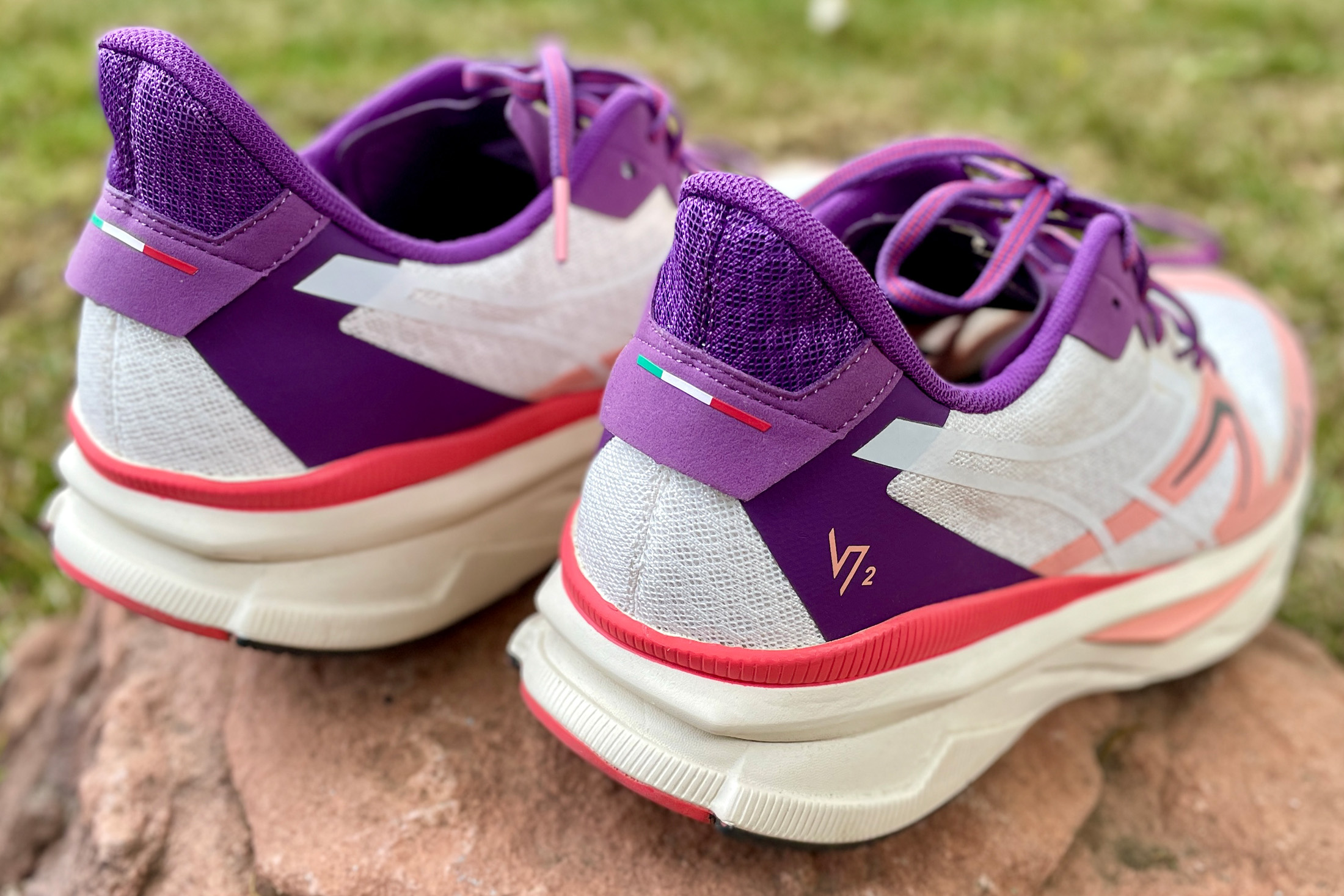
The foam is supple but not squishy, and for such a cushy shoe, it uses its surprisingly low drop (just 5mm) very well, helping with foot turnover and speed. I’ve been testing the shoe extensively on my primary road-to-dirt-road circuit; the shoe just rolls and grinds. I have 100 miles on my pair now, and it continues to bash against anything I throw at it with that springy, bouncy vibe you want from your daily road shoe.
‘Euro Sizing’
The materials and finish of this shoe might be showstopping, but the fit is not. If you are going to compra questa scarpa (“buy this shoe” — I’m an Italian language student!), recognize that it runs small. My usual size 12-12.5 was bumped up to a solid 13.
The shoe at this size resembles a pontoon boat. Runners with smaller feet will get a much more tidy package. There are not many Diadora retailers in the U.S. where you can try them on, so keep this in mind if you buy online. And speaking of buying … the Atomo V7000-v2 is expensive — $240.
So, expectations are equally high. The result is a product that uses quality of materials designed to uplift performance, enjoyment, and a feeling of overall connection with the product.
Diadora: Art in Action
These are running shoes that aesthetically have more in common with streetwear — a design that makes a real impact — and this brand that once sponsored athletes like tennis great Bjorn Borg and Italy’s Olympic gold medal-winning marathoner Gelindo Bordin is keeping its ears to the street of running culture.
During my visit, Diadora co-hosted a pre-dawn edition of “Mind the Gap,” an underground, check-point-based race in which runners compete amid the labyrinth of canals and bridges in Venice. Other collaborations, like with the Minneapolis retailer Mill City and Mexico City’s Dromo, make Diadora one of the key players in running culture today.
From what I have witnessed, Diadora operates with a distinction that is reminiscent of the systems of fast and slow thinking. Utilizing both modes — instinctive and emotional, deliberative and logical — seems like a quaint notion (especially in the super-competitive footwear business). I mostly see companies operating exclusively on the hyper-growth instinct and a win-at-all-costs mentality. A book about Nike actually uses that same statement in its title.
Italian Running Shoes: Beauty and Beast
Somehow, Diadora is a brand making a statement not only in the worlds of trendy, collab-based lifestyle footwear but also with Olympic-grade, sharp-end performance shoes for marathoning and track and field.
The Financial Times recently reported on how fashion has entered the running world and how small, design-forward brands make runners feel cool and create community. However, the piece focused only on apparel.
If District Vision, Satisfy, and Bandit are the style kings of running apparel, Diadora (and a few others) leads in stylish, high-performance footwear.
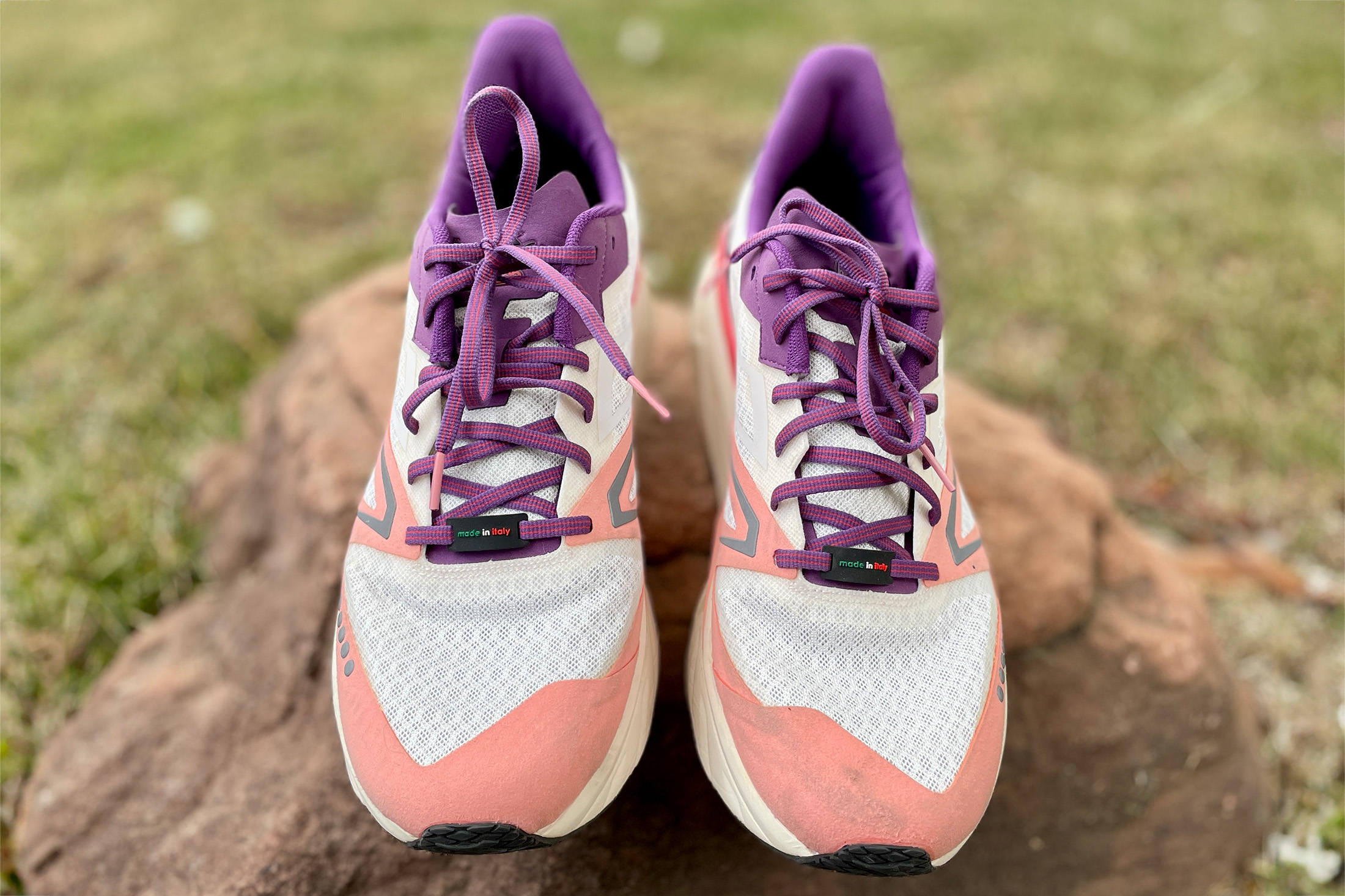
Diadora Running Shoes: Culture Meets Cutting Edge
The brand’s HQ resides in the same place it did in 1948, an hour and a half north of Venice. It’s there, albeit with some modernization, that Diadora established Centro Ricerche Diadora (Diadora Research Center) back in the 1980s.
From the research center, it’s just a few minutes’ walk to Diadora’s small shoe factory. Distinct by its lack of hazmat suits or air filtration — just red work shirts with green aprons — the clean but somewhat casual production line has just a dozen or so people working in stations for stitching uppers, gluing outsoles, molding uppers around the last, and hand-placing the finished product around shoe paper and then into the box.
While I toured the factory that day, the Diadora cobblers were making a collaboration shoe with the Danish brand Palmes, a knockout, classic-looking tennis shoe for only the most stylish dads and sneakerheads.
The Atomo V7000-v2 rolls off this exact same assembly line, and with the DDAnima foam, Diadora has struck a balance between the lightness and responsiveness you want out of shoes you’ll train in 6-8 hours per week. According to its own testing, version 2 of the ATOMO V7000 increases the midsole responsiveness by 30% while reducing its weight by 20%.
Somehow, Diadora not only makes a statement in the worlds of trendy, collab-based lifestyle footwear but also with Olympic-grade, sharp-end performance shoes for marathoning and track and field.
Though common in the shoe industry now, Diadora literally established on-site R&D and “lab” production at its small factory. There, an athlete is measured, and a last is created for their foot.
Per the Diadora playbook, the athlete and designer then walk 5 minutes to the factory where a shoemaker custom makes the design on the spot. Make no mistake; this sort of production is not a mass market — it is virtually a one-off. But it’s meant to establish a quick turnaround for professional athlete shoe development.
Don’t Sleep on Diadora
In my 16 years in the outdoor sports business, I can’t recall another running shoe brand that has the capability or resources to manage this level of detail for competition-level footwear. I did see this sort of quick-turn R&D and on-site production at companies like Pearl Izumi, but it was with apparel.
“Fatto in Italia” (“made in Italy”) has an enduring reputation for consumers around the world. It implies craftsmanship at a level that can be a costly premium to pay for.
Not all made-in-Italy (or European) products tout 100% Italian material heritage, but it is a regulated industry, meaning there is a standard for compliance. The Atomo V7000-v2 is a running shoe worthy of taking a look at.
Most of us feel uneasy when we examine the manufacturing processes of consumable goods. With this running shoe, you’re paying up for the cost and tradition of footwear manufacturing in a historically influential location.
